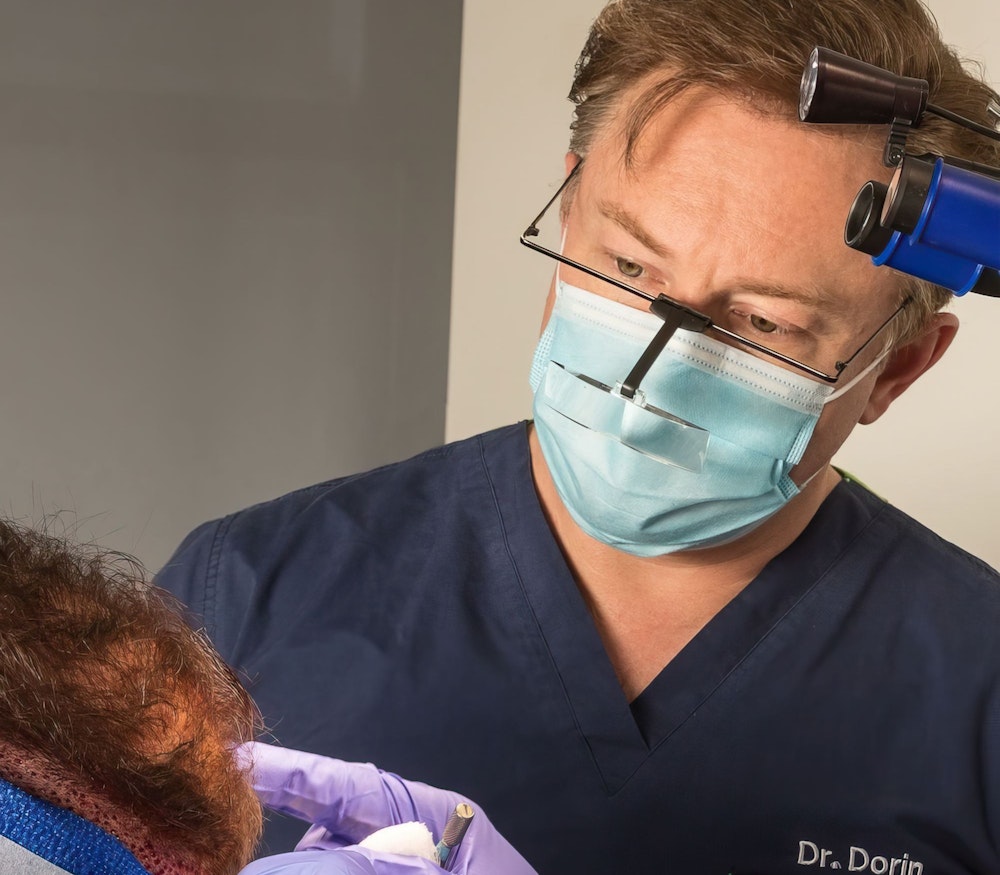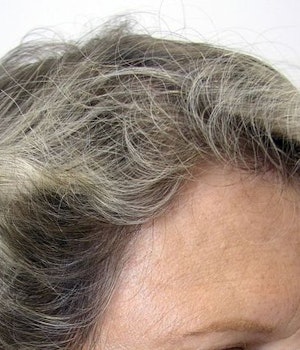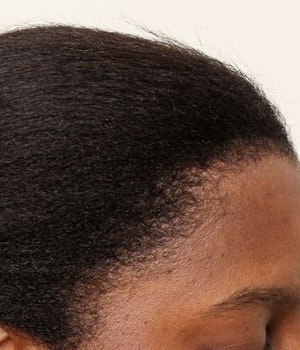Causes of Hair Loss NYC, NY
We've Got the
Solution You Need
- Solutions for Hair Loss Caused by Any Condition
- Among the World’s Top
35 Hair Loss Doctors - Specializing in
FUE & FUT - Surgical & Nonsurgical Solutions

Common Causes of Hair Loss And Effective Treatments From The Hair Loss Doctors
Androgenetic Alopecia (Male and Female Pattern Baldness)
This genetic condition leads to hair thinning and eventual balding in men and women. In men, it usually begins at the temples or crown, while women may notice diffuse thinning across the scalp.
FUE and FUT procedures are highly effective for restoring hairlines and regrowing thicker, fuller hair despite androgenetic alopecia. Dr. Dorin uses these techniques to carefully transplant hair follicles from the donor area to areas of thinning or balding, leading to long lasting, natural-looking results.
Telogen Effluvium
(Stress-Related Hair Loss)
Often triggered by stress, trauma, pregnancy, or significant weight loss, this condition causes rapid shedding of hair in large quantities. Though the hair typically grows back in three to six months, sufferers often desire a quicker return to normal.
Once patients have reduced stress levels, if they are still not confident in their appearance, we can provide several treatment options to restore a full head of hair that looks completely natural.
Traction Alopecia
This condition is caused by repeated tension on the hair, often from tight hairstyles like braids or ponytails.
FUT is highly effective at restoring hair after traction alopecia, as seen in Dr. Dorin’s gallery of results. This technique allows for precise placement of grafts in areas where hair has been weakened by constant pulling.
Female Hormonal Hair Loss
Some women experience thinning or shedding hair as a result of hormonal changes due to pregnancy, menopause, and other factors.
Dr. Dorin may recommend either FUT or FUE to restore hair density and address thinning areas. His goal is to create a natural, full look that boosts your confidence.

Hair Loss
Due to Medical Conditions
Conditions like hypothyroidism or lupus can cause hair loss due to disruptions in the body’s hormonal and immune systems.
Once the underlying condition is managed, Dr. Dorin can restore hair growth through FUT or FUE, which help revitalize hair follicles and improve overall hair density.

Post-Chemotherapy
Hair Loss
The medications included in a chemotherapy regimen can cause complete hair loss, typically referred to as anagen effluvium.
Dr. Dorin is passionate about helping patients who have finished their treatment regain a full head of hair. We offer surgical, non-surgical, and medicinal options, and often combine treatments to achieve optimal results.

Overstyling and
Chemical Damage
Frequent use of styling tools or harsh chemical treatments can lead to thinning and breakage over time.
FUT and FUE are often excellent options to restore hair in specific areas of damage or hair loss due to these conditions.
FUT and FUE Can Treat Male Pattern Baldness, Traction Alopecia, & More
Dr. Robert J. Dorin is an expert hair restoration surgeon whose approach realizes transformative results for patients suffering from virtually any cause of hair loss. NYC turns to Dr. Dorin because of outcomes like these:
Dr. Dorin Can Identify the Cause of Your Hair Loss And Recommend the Best Solution
If you’re experiencing hair loss for any reason, we invite you to consult an expert who can identify the underlying causes and recommend the best possible solution. Dr. Dorin’s advanced techniques in FUE and FUT are highly effective for various types of hair loss, whether it’s due to genetics, stress, overstyling, or medical conditions. He also offers non-surgical options to restore fullness and density.
During your in-depth consultation, you can:
- Get a comprehensive assessment of your hair loss and its causes
- Learn about all treatment options available to you, including FUE and FUT
- Explore a gallery of successful patient outcomes with the doctor who provided them
- Receive personalized care and recommendations from a doctor who has been in your position
Don’t let hair loss affect your confidence any longer. Reach out to our team in New York City to schedule your consultation with Dr. Dorin and take the first step toward a fuller, more youthful hairline.

“A life-changer.”
Great medical team all around and an even better doctor. Thank you Dr. Dorin for your care and assistance over the years. Highly recommend
View on Google
Dr Dorin restored my hair over 6 years ago and today it is still a life changer. His staff and approach is effective and precise. I would recommend Dr Dorin to any guy who wants to truly change his life.
View on GoogleYou Need an Expert Who Tailors Treatment to The Cause Why Choose Dr. Dorin?
Expertise in Advanced Hair Restoration Techniques
Dr. Robert J. Dorin is recognized as one of the world’s top experts in hair restoration. With decades of experience and Diplomate status with the American Board of Hair Restoration Surgery, he has pioneered advancements in techniques like FUE and FUT. These procedures are the gold standard in hair restoration. Dr. Dorin’s extensive training and attention to detail make him a top choice for patients seeking the most natural-looking outcomes.
Fully Customized Treatment Plans
No two patients are alike, which is why Dr. Dorin takes a personalized approach to each consultation. Whether you're experiencing male or female pattern baldness, hair loss due to stress, or other forms of alopecia, Dr. Dorin can design and carry out a treatment plan tailored to your needs. From the initial consultation through recovery, he will guide you through the entire process to ensure that you’re completely satisfied with your results. His personalized care and commitment to excellence make him the best choice for those seeking lasting hair restoration solutions.
Proven Results Through Compassionate Care
At The Hair Loss Doctors in New York City, our focus is on the patient experience just as much as the technical aspects of hair restoration. During his medical residency, Dr. Dorin noticed that he was beginning to lose his own hair, which led him to seek a solution with Dr. Robert True. Our hair restoration specialist has been in your shoes. He’s committed to helping patients regain their confidence and quality of life with genuine compassion and understanding.
“I couldn't be happier with the results.”
The team at Dr. Dorin's office is extremely professional, and the entire staff really makes you feel validated in your decision to work with them. I am very happy with my decision and highly recommend Dr. Dorin for all your hair transplant needs.
View on GoogleAfter extensive research to find the best fit for my personal needs, I chose Dr. Dorin, and I couldn’t be happier with the results. I highly recommend Dr. Dorin to anyone considering hair restoration, and hope this helps others who might be navigating a sensitive decision with confidence.
View on Google









